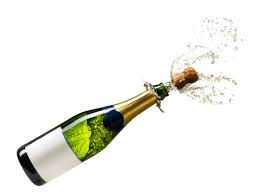Physical Address
304 North Cardinal St.
Dorchester Center, MA 02124

Champagne, often associated with luxury and celebration, has a reputation not only for its delightful bubbles and unique taste but also for its premium price tag. For many, the mention of this sparkling wine immediately sparks the question: Why is Champagne so expensive? This post will dissect the factors that contribute to Champagne’s distinguished cost.
1. Strict Geographic Origin
Real Champagne comes only from the Champagne region in France. This geographic specificity not only limits the production area but also means that any sparkling wine produced outside this region, regardless of quality, cannot be legally labeled as “Champagne.”
2. Traditional Production Method
Champagne is produced using the “Méthode Champenoise” or traditional method. This labor-intensive process involves secondary fermentation in the bottle itself, which contributes to its fine bubbles. This method is more time-consuming and costly compared to other ways of making sparkling wines.
3. Land Costs in the Champagne Region
The Champagne region is renowned, and owning vineyard land there is a premium investment. As demand for Champagne grows and land becomes scarcer, the cost of the land in this region has soared, influencing the final product’s price.
4. Aging Requirements
Champagne regulations require producers to age their non-vintage bottles for at least 15 months, with vintage bottles aging for a minimum of three years. This long maturation process ties up resources and inventory, adding to the costs.
5. Grape Variety and Quality
Champagne is made primarily from three grape varieties: Chardonnay, Pinot Noir, and Pinot Meunier. These grapes are meticulously selected for quality, ensuring that only the best go into every bottle.
6. Labor-Intensive Harvesting
Grapes in the Champagne region are predominantly harvested by hand. This method preserves the fruit’s quality but is more labor-intensive and costly than machine harvesting.
7. Risky Production
The production of Champagne carries inherent risks. The in-bottle fermentation process can lead to bottles breaking or exploding, leading to losses. Producers must account for these potential pitfalls in their pricing.
8. Branding and Prestige
Over the years, Champagne has been marketed and branded as a luxury item. Its association with celebrations, milestones, and elite events adds to its premium status. This branding allows for higher markups, making it more expensive than other sparkling wines.
Conclusion
Champagne’s allure isn’t just about its effervescent charm; it’s also rooted in its meticulous production, regional specificity, and storied history. While its price tag may be higher than other beverages, understanding the reasons behind its cost provides a deeper appreciation for this celebrated drink. So, the next time you raise a toast with a glass of Champagne, you’ll be sipping on centuries of tradition, craftsmanship, and dedication. Cheers